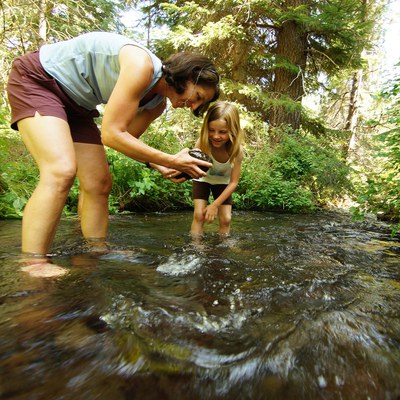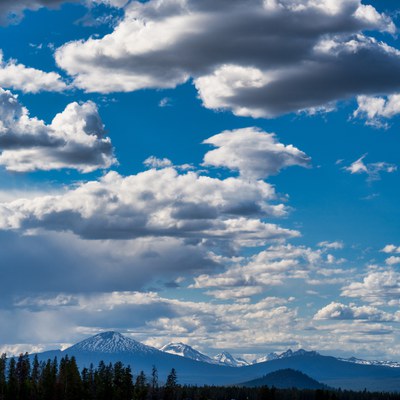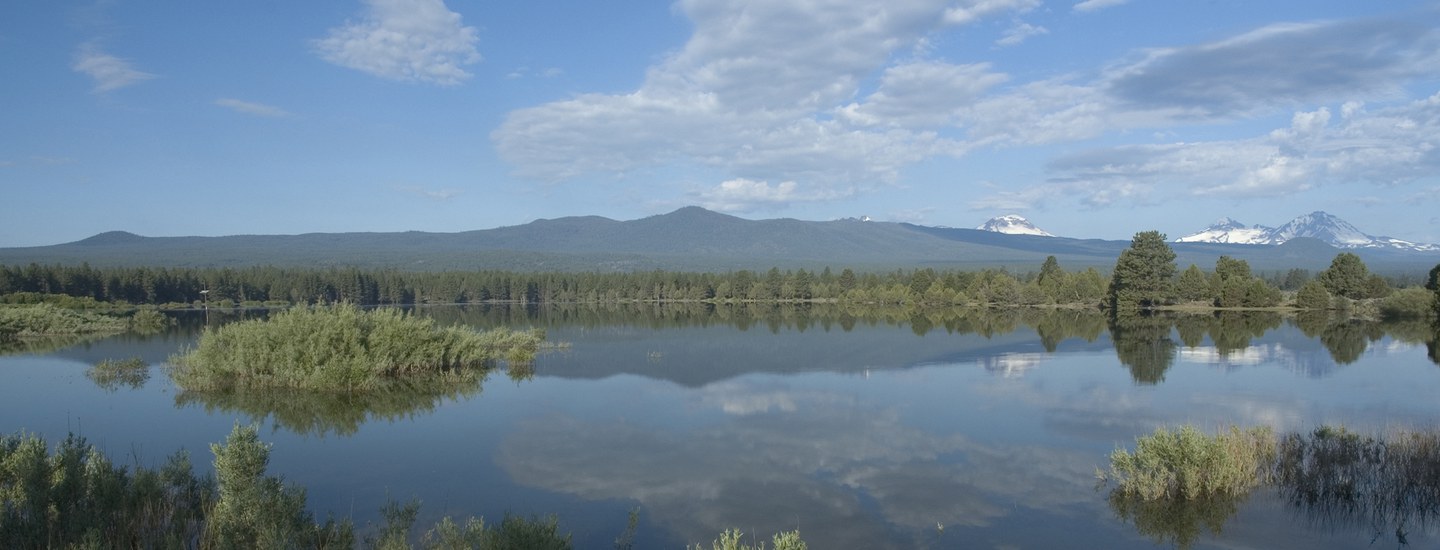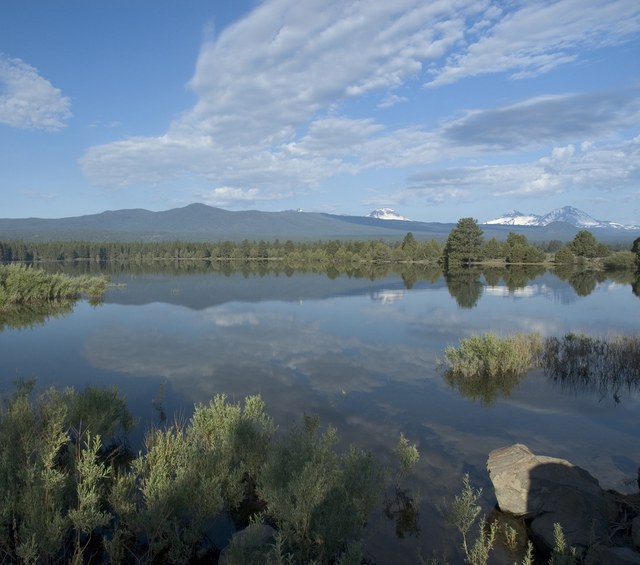It’s a wondrous wet world out there, and Wally the water droplet is in need of a vacation. They’ve been eyeing a cool spot in the United States called Bend, Oregon! Wally’s taken many trips in their lifetime. They’ve seen everything from woolly mammoths, ancient Egyptians, and even dinosaurs!
Wally is currently part of a large lake on the west side of the Cascade Mountains. So how are they supposed to travel over the mountains to Central Oregon? In order to start their trip, Wally needs some help from their friend, the sun! As the sun spends more time in the sky during the summer, it heats up the surface of the earth. This also causes the temperatures of rivers and lakes, like Wally’s, to warm and evaporate.

As Wally is warmed by the sun, they turn from a liquid into a gas and rise up high into the sky. As Wally floats to the sky, they cool and condense back into a liquid, joining other traveling water droplets, forming into a cloud! As the cloud fills up, currents, similar to ones you might find in the ocean, push the cloud along.
The cloud has picked up a lot of water passengers as it has moved, making it a little too heavy. This means some water droplets will need to exit the cloud formation in a process called precipitation. Wally is at their stop, Bend, Oregon, so they leave the cloud, falling towards the earth as a rain droplet.

Now some water in other parts of the world might collect in bodies of water, like Wally before their journey, or travel across the land in what’s called surface run-off. However, Wally wanted to visit Bend, Oregon because of its interesting rock formations. Believe it or not, these rocks greatly affect how and where water travels. Wally falls from the sky and lands on some of the many volcanic rocks that make up the Cascade Mountain range. These rocks have lots of holes in them that go all the way through. This means that instead of collecting in a small puddle on the rock, Wally passes straight through the rock’s structure and straight into the groundwater.
Traveling underground from the mountains, Wally follows other water droplets and emerges aboveground into small streams, which meet up with larger creeks, and eventually joins a larger river—the Deschutes River. Some of this water stays underground for a long time, collecting in large underground pools called aquifers.
As Wally travels down the Deschutes River, they see all sorts of amazing plants and wildlife that live in this waterway. As they float, Wally passes by pines, willows, and flowers like lupine and columbine. They see all sorts of waterfowl, or birds that primarily live in or near water, like ducks, geese, and mergansers. It’s not just birds that use the Deschutes River. Mammals of all kinds (like deer, beavers, and otters) utilize the water from this beautiful river, including humans!

This summer, while you’re playing in the water around Bend, admiring the clouds during a summer storm, or even pouring a glass of water from your faucet at home, think about Wally’s amazing journey and what all it took for them to visit beautiful Central Oregon!
Learn more:
- Nature Identification with Kids: Birds
- Tips for Hiking with Kids
- The Incredible Journey of Sockeye Salmon
Sources:


